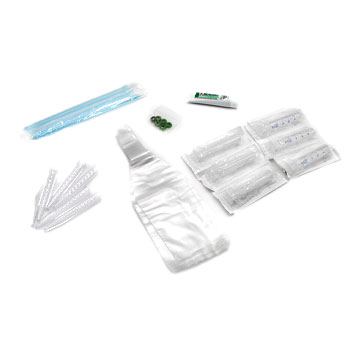What I Look For In a Brood Bitch After Breeding Over 300 Litters
Note: Leerburg formerly bred working bloodline German Shepherds until deciding to shift its focus towards producing dog training videos and courses alongside providing quality dog training equipment. This article was written when our breeding program was still active. While Leerburg no longer breeds working GSDs, we believe this article may still provide valuable information for those interested in starting their own breeding program.
After breeding German Shepherds for over 27 years (and producing over 300 litters of working bloodline German Shepherd dogs), I am just now beginning to feel like I have a grasp. I sometimes worry that this puts me into the category of a slow learner, but when I look around there are not many in this country doing much better.
To begin with, I am a strong proponent of Schutzhund as a sport and more importantly as a breeders tool. With that said, you will see that very few of my females have Schutzhund titles. The purpose of this article is to explain how I have tried to manage a breeding program from a bitch's standpoint.
In Germany, every village has one, two, or three Schutzhund clubs. This will never happen in America (at least not in my lifetime). I wish it were not like this here, but it is. If it were, it would be very simple for me to run my foster home program, (see my article on how to build a bloodline through foster homes), and make sure that everyone I give a free foster home bitch to gets her titled. But that is impossible when the nearest Schutzhund club is 1 1/2 hours away.
So I have selected a different path. My breeding goal is to develop a bloodline. This means keeping female puppies back, and occasionally adding blood through the purchase of a puppy from another breeder or buying an adult female.

When I keep females back the selection is first made according to a pedigree and then by evaluating the temperament and look of the entire litter. If the litter all looks good, I will keep the pick of the litter but I am not always sure this matters.
With this said, I still make mistakes in my picks...
When I place puppies in foster homes, I breed less than 1/2 of those that I keep back. As a bitch grows up, I ask the foster parents to bring the female to the kennel for temperament evaluations and worming. This allows us to continually monitor the temperament and growth of the bitch. We do preliminary x-rays of hips at 8 to 10 months of age. I try not to make a judgment on the dog until it's 12 to 18 months old.
All the dogs that are selected for breeding get x-rayed for OFA at 2 years of age. More about this later in this article.
If I do not like a bitch's temperament, structure, or hip quality, I will spay the bitch and she lives out her life as a family pet with the foster family. If I make the decision to breed a bitch, I do not pass final judgment on her until I have had a chance to monitor a litter. If there are too many bad hips, a pattern of health problems, or temperaments that I am not satisfied with, I spay the bitch and she becomes a pet.
If another breeder reads this and decides to try the program, he or she needs to start with a pure working pedigree (no show bloodlines.) If the female does not have all working bloodlines, then it's not going to work. You are starting with muddy water.
Breeding is difficult enough without starting with a handicap. Breeders that have part German and part American bloodlines have virtually no chance of success. If the goal is to produce working dogs, a breeder with German confirmation lines mixed with working lines is also destined for failure. It takes too many generations of breeding to eliminate serious problems.
The only way to produce working bloodlines is to continually breed working bloodlines. We (by we, I mean people like myself that want to breed working dogs) must keep females with correct genetics. There are no books on GSD genetics. We gain our knowledge from breeding and talking to other breeders. With that said there is no substitute for experience.
When I started breeding it was a crapshoot. But as time passed and litters passed, I gained a gut feeling about what works and what does not work. When people question the fact that my pups cost $1,800.00 I simply point to the fact that they are paying for the experience I have gained over the past 40 plus years of raising, training, and breeding German Shepherds. I have dedicated my life to the breed. There are cheaper puppies to be had and I fully understand that some people don't need to or care to spend this much money on a pup.
Remember that the best pup in the litter has the genetic capability of reproducing the worst pup in the litter.
I will always remember Walter Martins. He has since passed but he was the breeder of Wienerau Kennels in Germany. He made a comment to me in 1984. He said, "Remember this, the worst pup in the litter can produce just as well as the best pup in the litter.” In the years since then, I have modified the statement by saying "Remember that the best pup in the litter has the ability to reproduce the worst pup in the litter."
This is the reason we want uniformity of temperament and type in our litters. My old stud dog (Natan Busecker Schloss) produced litters that looked like they were all peas from the same pod. He was not the perfect dog, but he was certainly a great stud dog that taught me a lot about breeding.
Once I have selected the females that I am going to keep, I don't finalize my decision to breed them for the first 18 months. I watch the various stages they go through. I understand the temperament of the foster parents and how this translates into the dog. Some foster parents are too easy on their dogs. The dogs become spoiled, some too strict.
The real decision-making time on whether to breed comes after 18 months. To make a breeding program work the breeder must be ruthless in his final selections for his breeding females. He needs to be prepared to say, "I made a mistake" and walk away from a bitch and let her become a pet.
Not all breeders have the experience to make these kinds of decisions. For these people there is nothing wrong with using Schutzhund as a measuring stick to select a female for breeding. I think it's a great idea if they are honest with what the dog shows in training and in the trial.
For me, a title is not the end-of-all-ends in this process. In fact, I have seen far more titled females that should not be bred than I care to think about. I laugh to myself at these purists who scoff at what I do because I would dare breed a female without a Schutzhund title. The fact is, it's genetics that produces good dogs and not titles. It's the experience of how to put genetics, temperament, and health together that produce good dogs and not titles.
To these people, I ask how many winners of the German Bundessieger (the German Schutzhund Championship) or the American Schutzhund Championships have gone on to become great stud dogs? The answer is very, very, very few. None that I know of in the past 25 years.
The reason is that the dogs that win these championships are mostly very compliant dogs. They need to be for top sport. There are only a handful of trainers in the world who have the ability to take a really tough dog and train him to be a competition dog.
The top stud dogs are those that breeders like myself see and say - "Here is a dog for breeding not for sport" The top stud dogs are the extreme dogs, the dogs with sound nerves but serious fight drive (you can read about this on my web site). I tell people that we need to breed the extreme to produce the norm. This translates into meaning that you cannot expect to breed 2 normal dogs and come up with an extreme. A simple class in "genetic 101" will tell you that.
So back to my females, I expect to see a bitch that has nerves that can deal with stress. I want to see a female that has nerves and drive. When you take a housedog that lives with a family and bring it into a kennel facility like mine, you will see how it reacts to stress. It is very disconcerting for an 18-month-old house dog to come to a kennel where there are 15 to 20 barking German Shepherds. If a dog does not have self-confidence it will easily get freaked out in this new environment.
I see what type of temperament a bitch has by putting her on a tie out here at the kennel when we do the bite work. The bottom line is that when you have been around working dogs for over 40 years, it does not take long to evaluate the temperament of a bitch and decide if you like it or if there is a flaw somewhere. I do not need a Schutzhund judge to tell me this bitch is not a breeding bitch.
If everything looks OK and we are pretty sure we want to breed the bitch, I will x-ray it. This is the next to last step in my selection process.
I have only had two OFA excellent dogs in my life. One was my stud dog Natan. He produced a number of OFA excellent dogs, but I was never lucky enough to have kept one of them. I am happy to get an "OFA Good."
If a bitch has a "fair" rating she needs to be above average in all other categories to breed. A word to the wise on selecting breeding partners. Never breed an OFA fair to an OFA fair. You are coasting downhill if you do. In fact, unless a male is outstanding in every other way, I would not breed an OFA fair male. On the other side to this coin, I have had several bitches that were OFA fair that came from OFA Good parents. These bitches never gave me a bad hip. I had an OFA fair bitch that produced OFA excellent pups (go figure).
The last step in the program is to select the male that your bitch is bred to. Here at my kennel, we usually have 2 or three stud dogs. We select the stud dog according to the needs of the female. Some females should NEVER be bred to certain bloodlines or certain temperaments of dog.
I tell people that breeding is like making bread. It's an ART. It's about putting the pieces together to produce something you can be proud of. Breeding is ART. Done right, we produce a beautiful specimen. One misstep and we have mud.
There is another statement that Walter Martin made that has proven to be true. "If you plan on building a bloodline, you need to breed at least ten litters per year." That is a very true statement. No matter how selective we try to be, we are not always right in selecting breeding partners.










Ask Cindy.